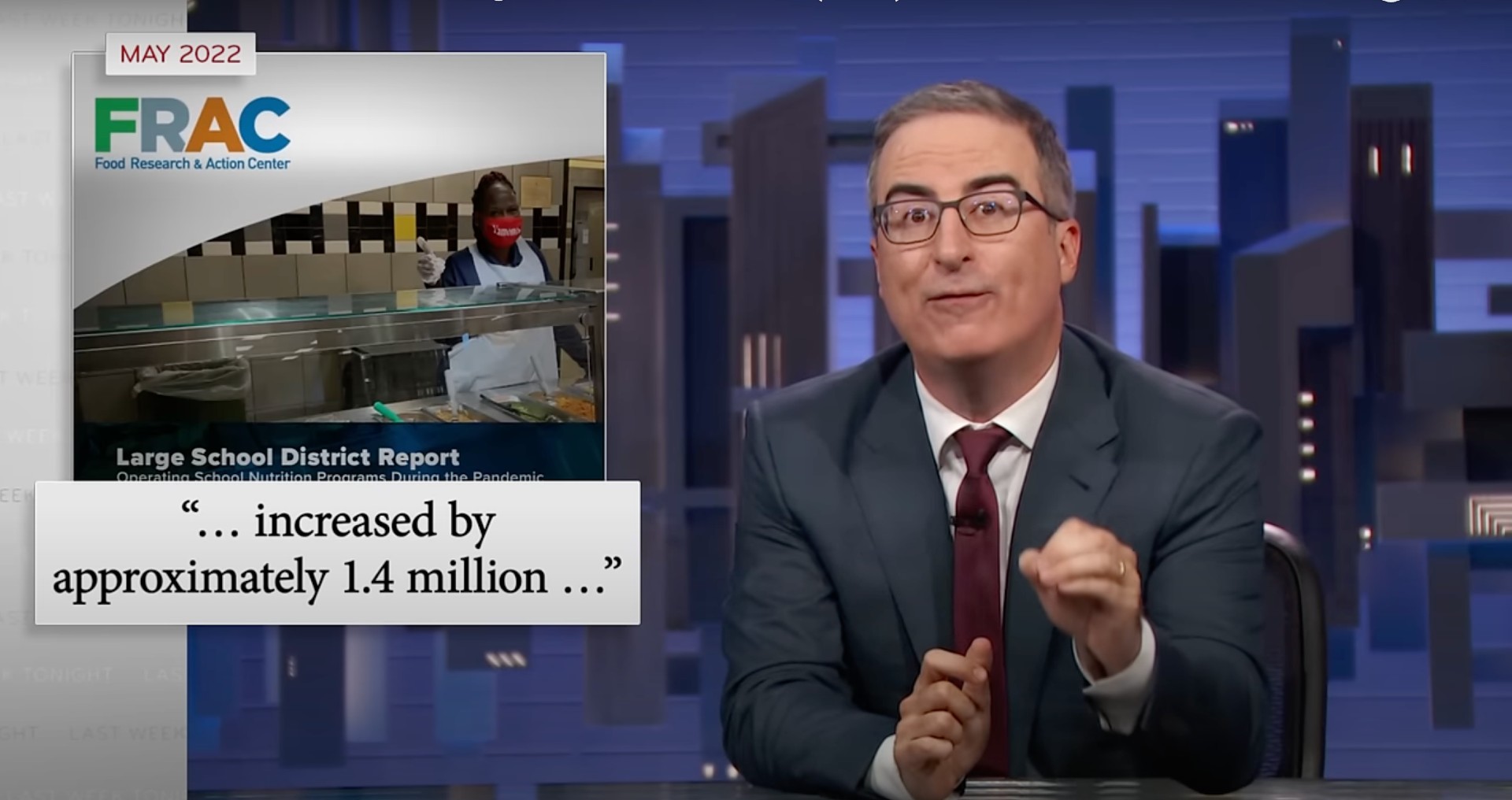

FRAC’s work was highlighted by HBO’s Last Week Tonight with John Oliver in a segment on Healthy School Meals for All. Watch the segment below.
The National School Lunch Program — the nation’s second largest food and nutrition assistance program behind SNAP — makes it possible for all school children in the United States to receive a nutritious lunch every school day. The vast majority of schools participate in the program, providing meals to 30 million children on an average day.
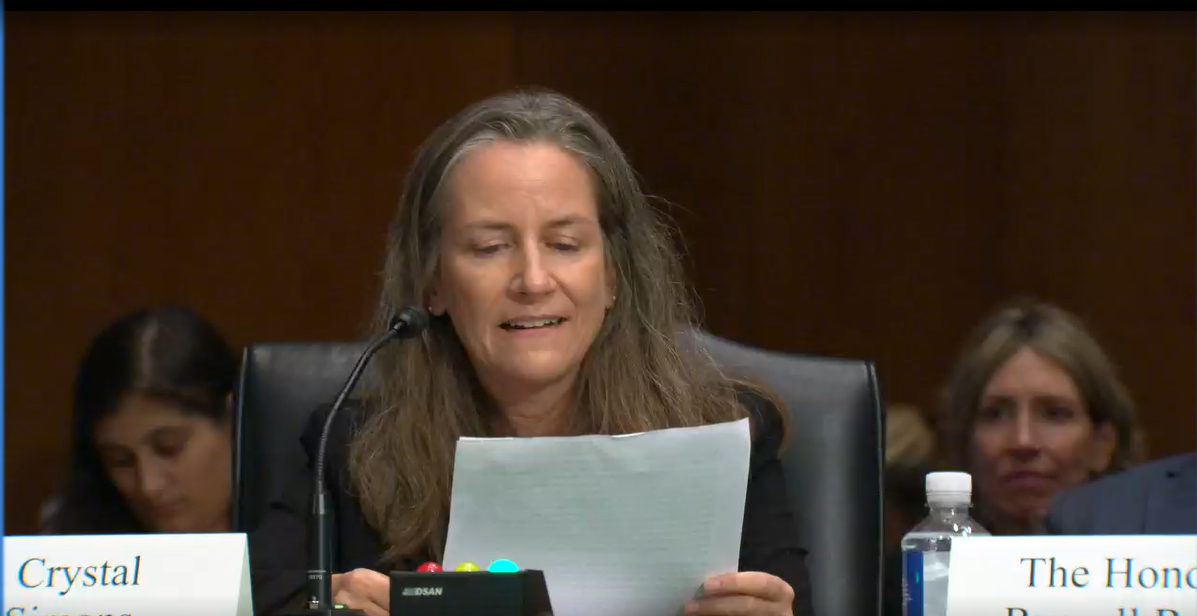
On Wednesday, September 18, 2024, FRAC Interim President Crystal FitzSimons testified in front of the Senate Agriculture Subcommittee on Food and Nutrition, Specialty Crops, Organics, and Research on the importance of school meals. The hearing was entitled “Keeping Kids Learning in the National School Lunch Program and School Breakfast Program” and is available to watch on the committee webpage. Read the oral testimony and FRAC’s written testimony.
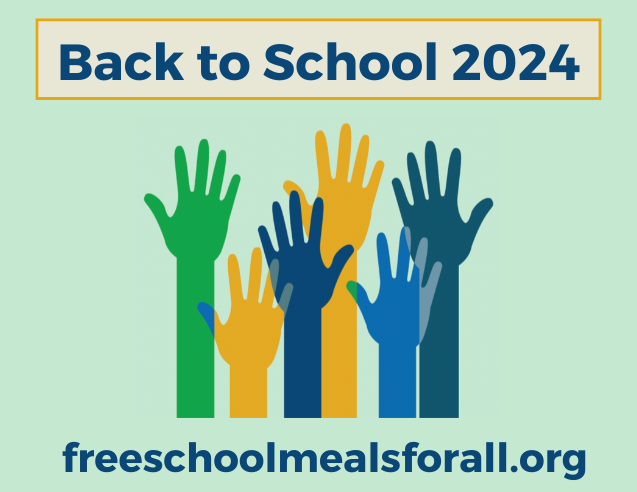
It’s Back-to-School time, which means it’s time to raise your hand for Healthy School Meals for All!
More and more states are providing free school meals to all children, no matter their household income. But our work is far from over. We need Healthy School Meals for All nationwide so that every child in every state has the nutrition they need to learn and thrive. Urge your Members of Congress to act today. Hungry children can’t wait.
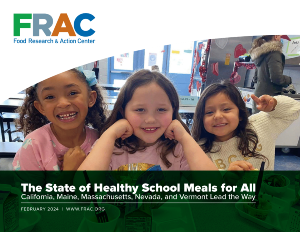
School lunch participation in the five states that implemented Healthy School Meals for All policies during the 2022–2023 school year increased compared to prepandemic participation levels. Learn more in FRAC’s latest report, The State of Healthy School Meals for All: California, Maine, Massachusetts, Nevada, and Vermont Lead the Way.
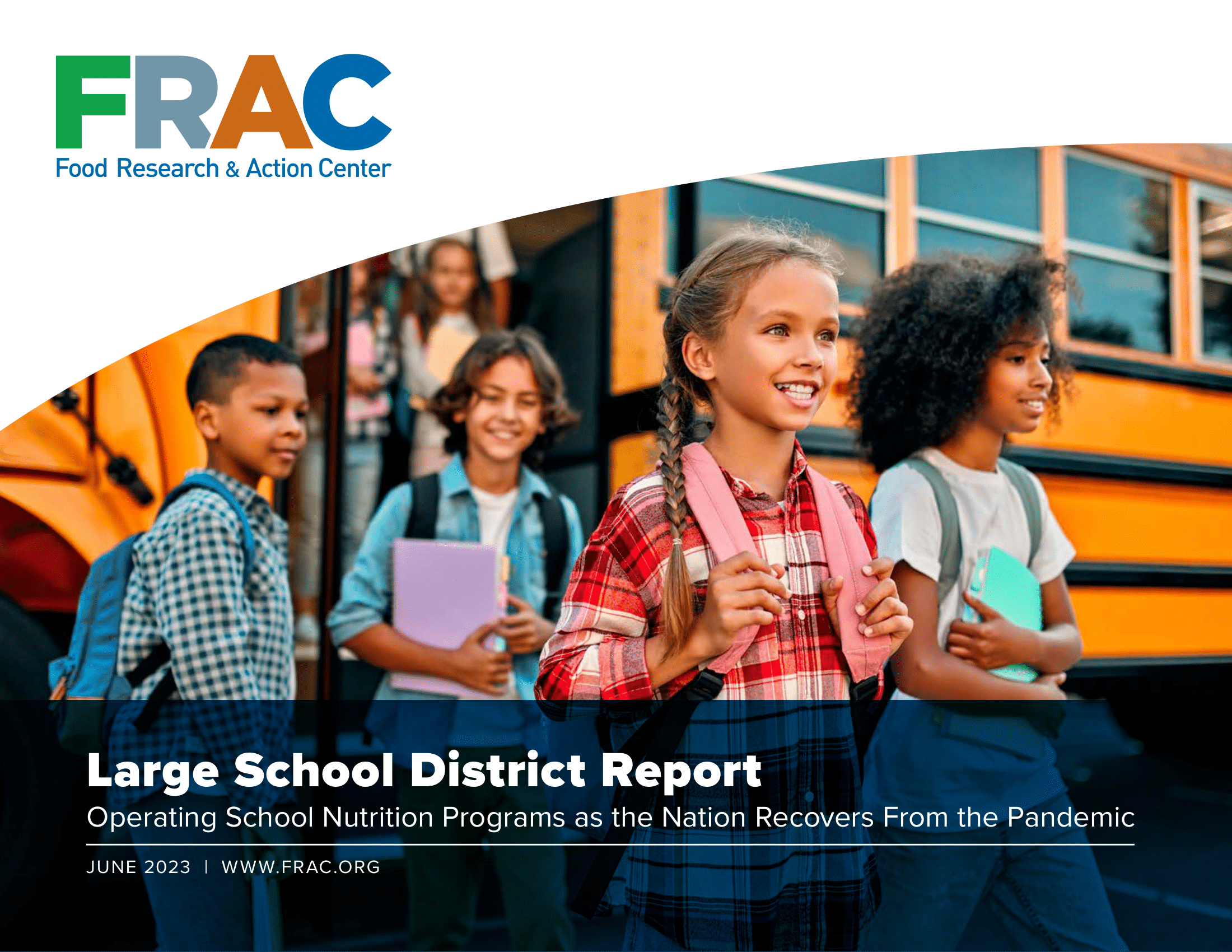
Many large school districts across the country reported decreased participation in school breakfast and lunch when the nationwide child nutrition waiver that allowed schools to offer school meals to all of their students at no charge ended, according to FRAC’s latest report. Read Large School District Report: Operating School Nutrition Programs as the Nation Recovers From the Pandemic for more insights.
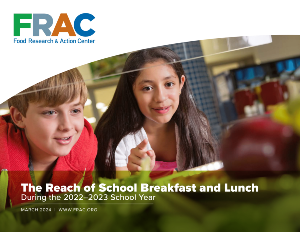

Community Eligibility: The Key to Hunger Free Schools finds that the number of schools participating in community eligibility grew by 15.8 percent from the 2021-2022 school year , with 82 percent of eligible schools participating . Nearly 20 million children in 40,235 schools and 6,419 school districts are participating and have access to school breakfast and lunch at no charge.

Too many students miss out on the important benefits of school lunch when barriers exist that prevent students from consuming all of their meal. This report includes best practices for school districts to maximize student participation and consumption in school meals.
Benefits of School LunchA wide body of research supports the health and educational benefits of participation in the National School Lunch Program. Studies show that participation in school lunch reduces food insecurity, obesity rates, and poor health. Find out more about the benefits of school lunch participation.
Eligibility and ReimbursementsLow-income children are eligible to receive meals for free or at a reduced price based on their household income or participation in other government programs like SNAP or Temporary Assistance for Needy Families (TANF). Children from moderate to higher-income households pay the school lunch fee set by the school district. Find out more about school meal eligibility and how children are certified for free and reduced-price school meals.
Community Eligibility ProvisionCommunity eligibility allows high-poverty schools and districts to offer breakfast and lunch at no charge to all students. Schools that use community eligibility have seen increases in participation in school breakfast and school lunch and reduced administrative costs as community eligibility schools no longer have to collect school meals applications. Find out more about the Community Eligibility Provision.
Unpaid School Meal Fees